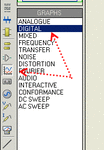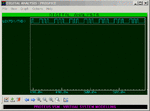romel_emperado
Advanced Member level 2
- Joined
- Jul 23, 2009
- Messages
- 606
- Helped
- 45
- Reputation
- 132
- Reaction score
- 65
- Trophy points
- 1,318
- Location
- philippines
- Activity points
- 6,061
this is very generic to pic16 but concept is almost same...
**broken link removed**
**broken link removed**
this is very nice yes the concept is the same and easy to understand but I already tried this one...
---------- Post added at 17:03 ---------- Previous post was at 16:50 ----------
When CKE=0, transmit occurs on transition from idle to active clock state, andwhen CKE=1, transmit occurs on transition from active to idle clock state. Bit 0 (BF) isthe buffer full status bit. When BF=1, receive is complete (i.e., SSPBUF is full), and whenBF=0, receive is not complete (i.e., SSPBUF is empty)
by the way that falling edge of CS is when the byte is transferred according to the timing diagram.. CS is used only when communicating with other device because when CS is low that is chip select..
so I will try to toggle my Serial Clock (SCK) 8 times to complete the data transmit and receive right?
Last edited:


